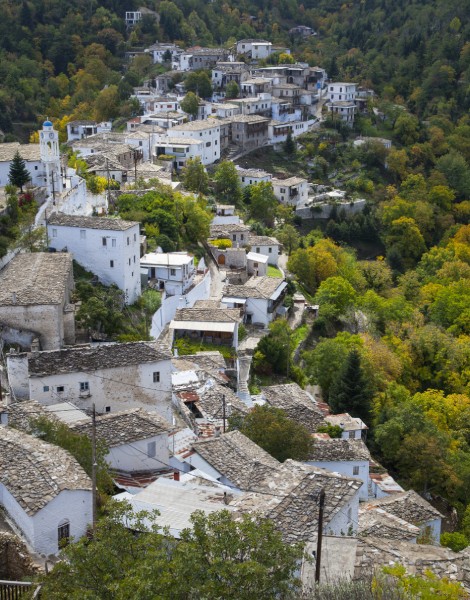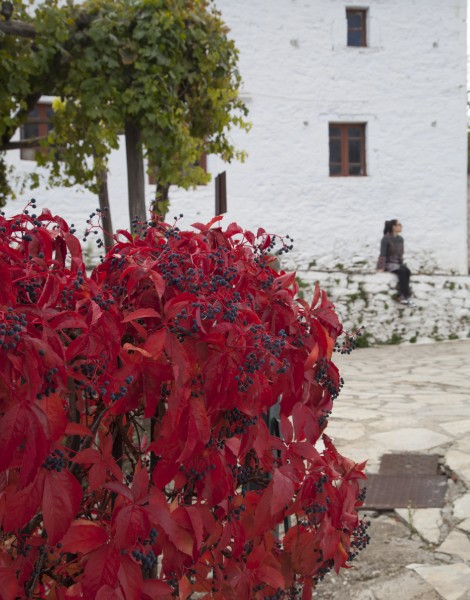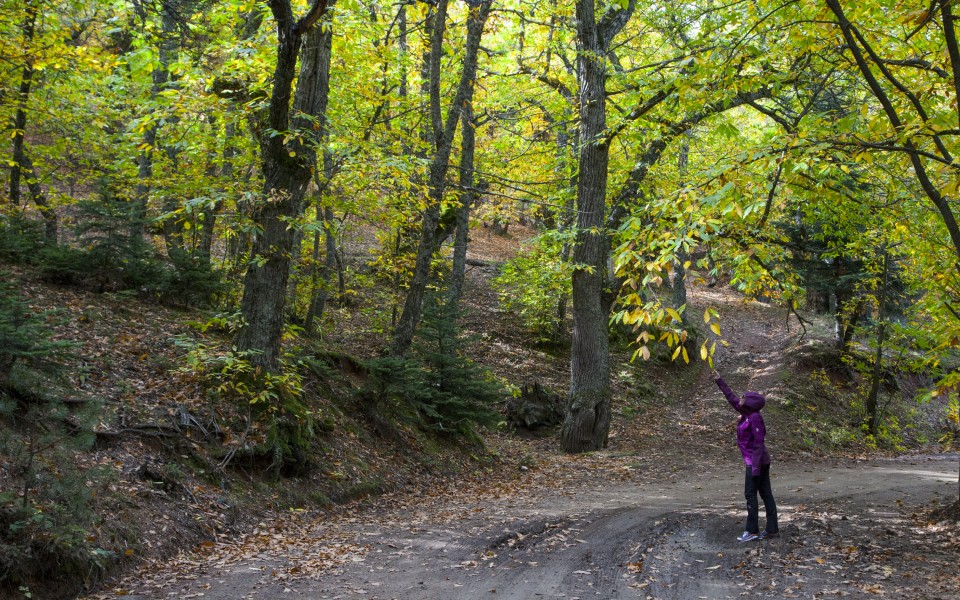Vamvakou: An Air of Renewal
A few months ago, Eleni Mami and Anargyros Verdilos had baby Konstantinos, a birth which brought the total number of inhabitants in the village of Vamvakou up to twenty-one. The proud parents themselves only settled here permanently in 2019, joining other young people who’d recently moved to Vamvakou to help rejuvenate the village, the ancestral home of the Greek shipping magnate Stavros Niarchos. Their efforts, however, officially started in 2018, when Eleni, Anargyros and others founded the organization “Vamvakou Revival”, in the hope of doing something to revitalize the rural community. They contacted the Stavros Niarchos Foundation and received both financial aid and moral support.
In addition to its beautiful raised square, dominated by an enormous plane tree, its traditional kafeneio and the village’s three-aisled church, Vamvakou now boasts a number of newly restored buildings, a lovely playground, the beautiful guesthouse “Ruga” (Tel. (+30) 27310.219.00), serving homemade breakfast, and the modern restaurant-café “Voureiko” (Tel. (+30) 27310.279.64), known for its unique dishes. Most notably, however, you’ll find energetic young people organizing a variety of activities throughout the year – from workshops on robotics and art to local festivals – and there are hiking routes and electric biking trails in immediate area. The establishment of a local agricultural cooperative is underway, and the old school has been transformed into a co-working space, thus encouraging young people to work remotely from Vamvakou – at least until the school bell rings again in a few years for the young pupils of the village, as is the long-term intention of the team behind this project.

© Olga Charami

© Olga Charami
Kastanitsa: Architecture and chestnuts
While its name does come from the Greek word for chestnut, the village’s beautiful chestnut forests and all the local chestnut recipes are not the only reasons that will bring you to Kastanitsa, particularly in the wintertime after all the chestnuts have been harvested. Built on the saddle between two hills, and designated for historical preservation, Kastanitsa boasts an impressive display of traditional architecture unlike any other village on Mt Parnon. The sight of so many slate-roof stone dwellings, including well-maintained three-story tower houses, will make your tour of its alleys particularly enjoyable. The whitewashing of the houses is interesting, too; many lime kiln sites used to operate here.
Kastanitsa was founded in the 13th century by the Tsakones, a Peloponnesian population group with its own unique dialect and customs – you can find out more about them, and other facts about the area’s history and nature, at the local Environmental Information Center. You can leave your car in the large parking lot by the entrance to the village and walk uphill to the ruins of the Kapsabelis Tower, a Byzantine-era castle that overlooked the area until it was demolished during last century’s Greek Civil War. From there, you can see the entire village and much of the surrounding forests. Back down at the main square, you can purchase chestnuts and try some local recipes at the taverna Liakouris (Tel. (+30) 27550.522.93).

© Olga Charami
Polydroso: Wandering in the forest
On a Sunday morning in the village of Polydroso village, one is likely to encounter hikers refilling their water bottles from the public drinking fountains and studying the hiking trails on information boards. The village of Polydroso (or Tzintzina, as it is also called), in a beautiful location at an elevation of 1100 meters, is an excellent base for hiking in the mountains, as well as an ideal place for a quiet two-day stay. Its hiking network consists of nine signposted trails (two of which are still under development), with the village square serving as the main starting point.
The trails vary in difficulty, ranging from gentle forty-minute routes to long circular hikes that pass through the countryside, leading to springs and other places of interest, such as the cave church of Ai Giannakis or the Monastery of Agioi Anargyroi; the latter is one of the oldest monasteries in the area. The same goes for the cycling routes which cut through forests of firs. You can find out more about what the area has to offer from Antonis Papanikolaou, owner of the guesthouse “Prytaneio” (Tel. (+30) 27310.269.82), an excellent accommodation choice. Here, you can sit by the fireplace in the establishment’s main hall and enjoy hot drinks and savory pies as you admire the views of the forest and the village, all while planning your excursions for the next day. Dining options in the area include “Koukounari” (Tel. (+30) 6944.474.767) in Polydroso and “Ta Oraia Veroia” (Tel. (+30) 6978.920.035) in the neighbouring village of Veria.












